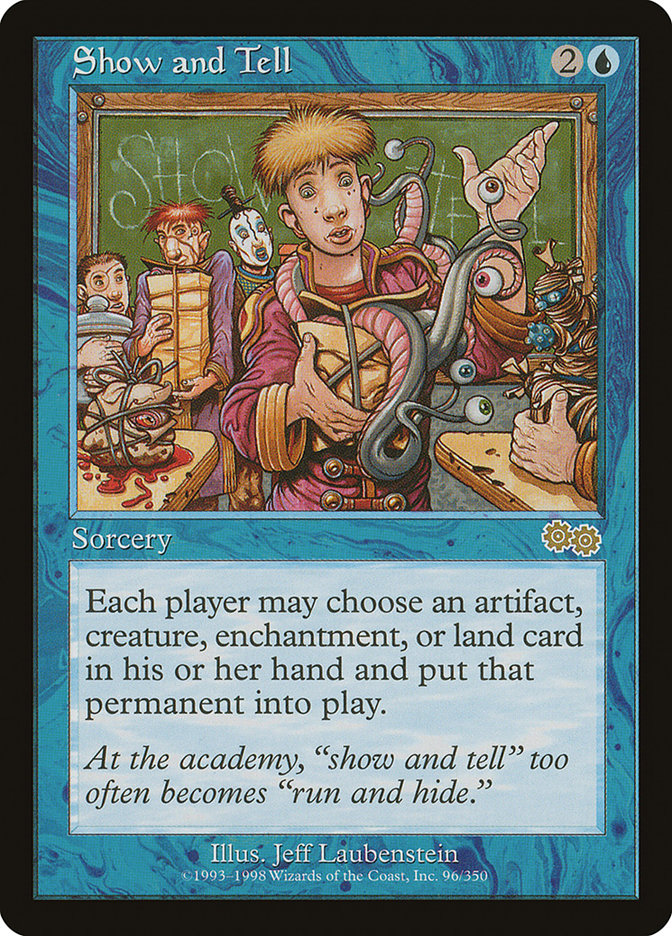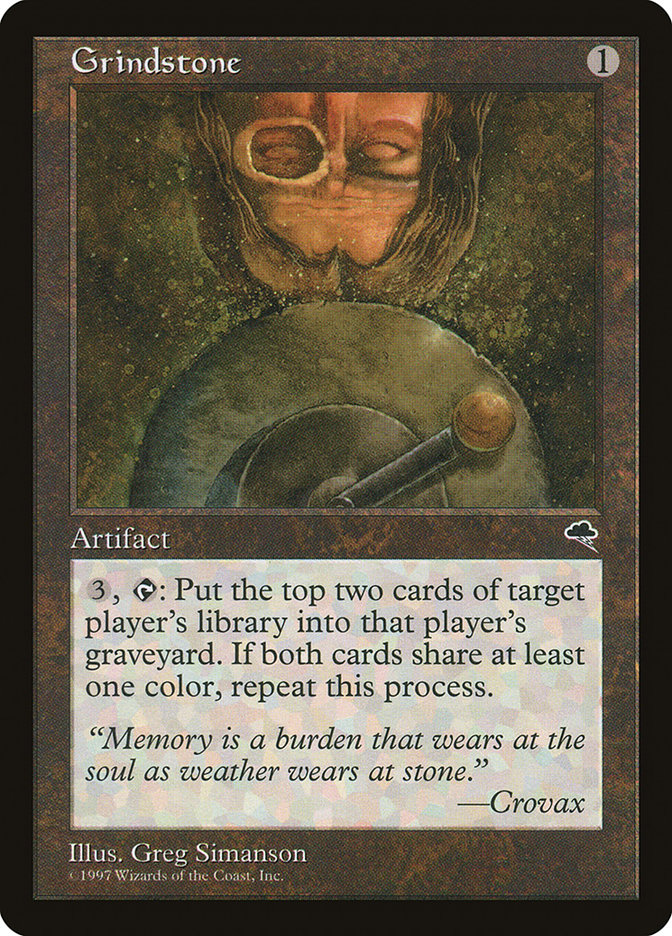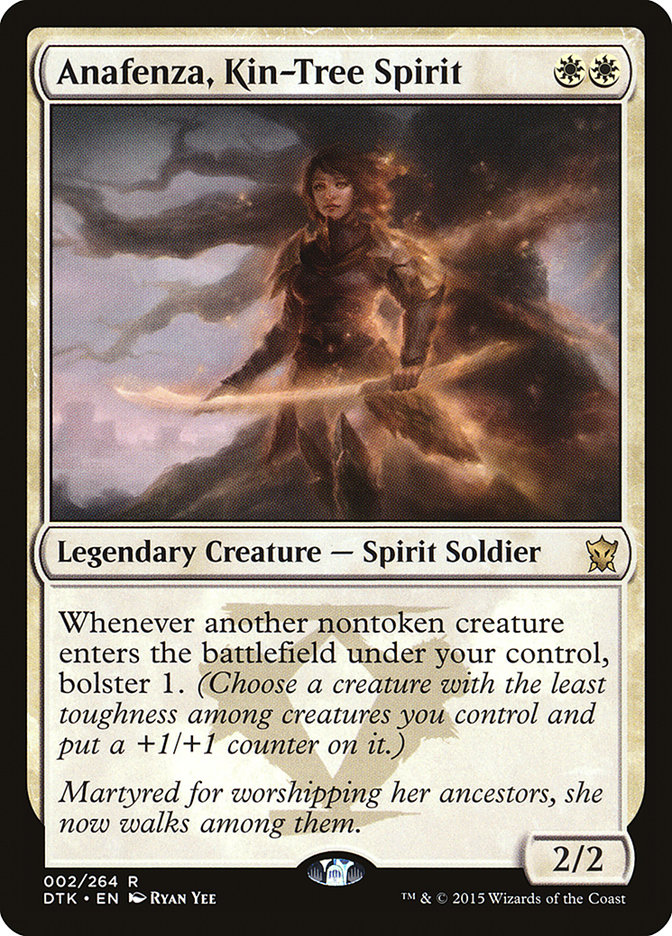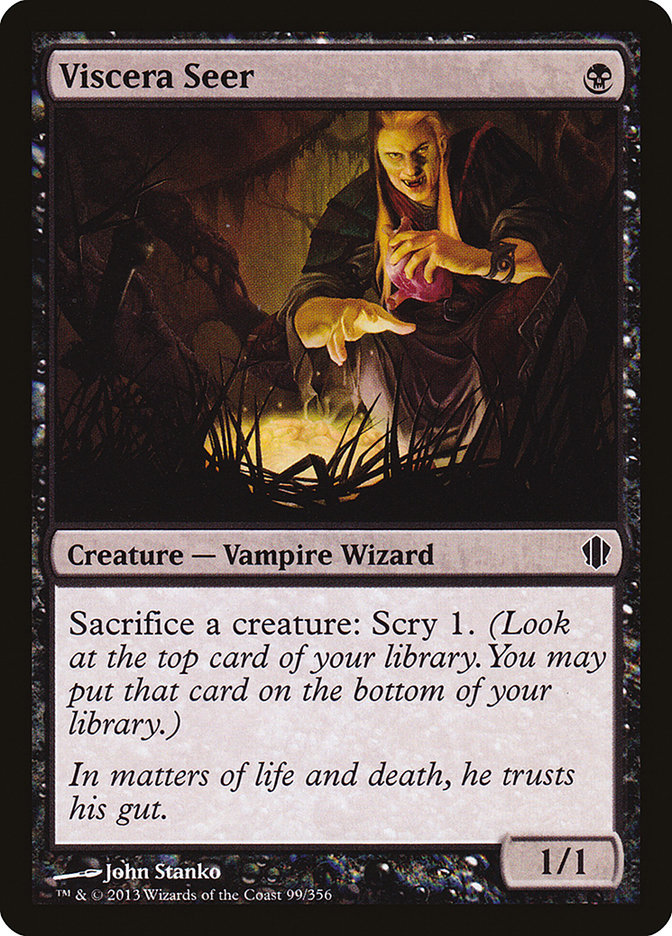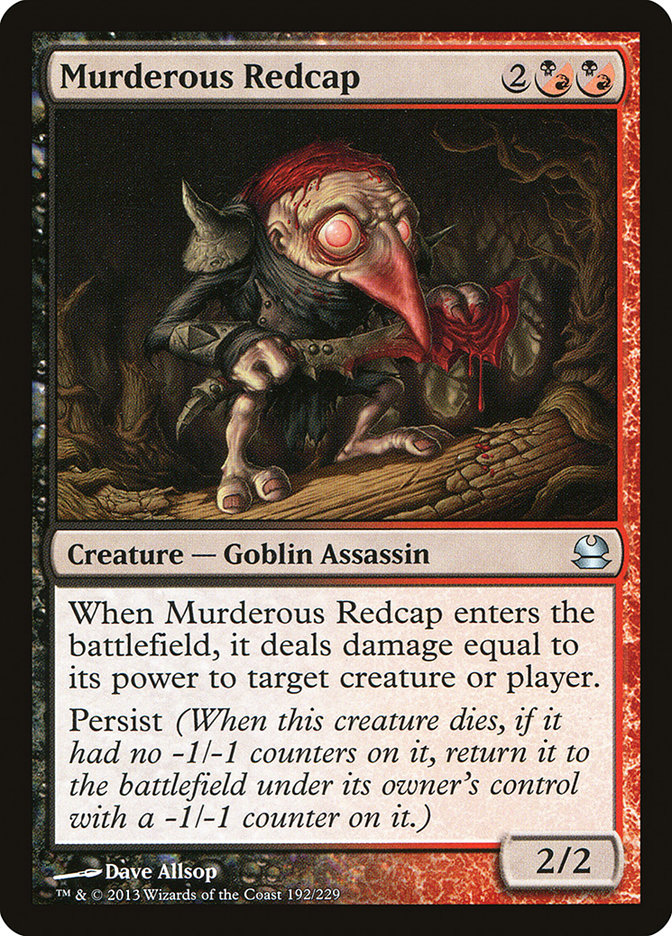Ah, the Smart and Thinvitational. What a glorious event!
Wait? You don’t know what the Smart and Thinvitational is? Oh that’s easy! It’s a tournament with some of the smartest and thinnest people I met during my five years in Seattle where my best friend, Steven Birklid, brews up some formats for the nine of us to play, we take it far too seriously, rent a house, break bread, and talk trash for three days straight all while mixing in our favorite format when we have time – Cube drafting.
So what’s on the line for winning the Smart and Thinvitational, you ask?

A big ole poster of Zac Hill!
At this point, competitive Magic is a thing of the past for the nine of us who do battle. Some of us have delusions of grandeur about returning to their competitive prime (and by “some,” I mean me and only me), but realistically, we’re nine very likeminded people who enjoy each other’s company, enjoy the thrill of competition, and love to talk trash when we Force Spike or Mana Tithe a relevant spell. It makes for a great way to put real life on pause, which is necessary given how much we all work during the year.
Let’s start by introducing the competitors:

Cedric Phillips
At this stage, you all likely know who I am. But if you don’t, I’m Cedric Phillips. I’m the Media Manager for StarCityGames.com and Lead Broadcast of the SCG Tour®. When I’m not doing one of those two jobs, I’m busy rooting for the Cleveland Cavaliers, working on my MLB Daily Fantasy Sports teams, listening to Paramore, or enchanting a Slippery Bogle with an Aura.

Steven Birklid
The mad scientist behind most of this nonsense, Steven is now the proud owner of a Fast Signs in the suburbs of Seattle. Before he got a real job, he was the guy winning all the PTQs in Alaska and probably swindling you in a Fantasy Football trade. He’s also one of the best curlers in the world, if you care about things that take place on icy surfaces.

Kyle Boddy
The Asian Sensation who has a love for blue cards unlike anyone I’ve ever seen. Kyle wrote for StarCityGames.com many moons ago and was one of Ohio’s highest-ranked players back in the day. Nowadays he’s the owner of Driveline Baseball, where he works with pitchers to increase their pitching velocity. He’ll also put you on blast on Twitter at a moment’s notice.

David Bedoll
The originator of this concept, the Smart and Thinvitational would not exist without DB. He’s an actuary by day, someone who climbs mountains on weekends, and his bluntness will have you in tears laughing whether you like it or not. He likes them there green cards and has no problem taking as many as he can get his hands on.

Brian Wong
A former contributor to the Limited Resources podcast, Brian is a legendary player in the Seattle area. He’s played on the Pro Tour a handful of times and has never lost a game of Limited Magic in his entire life (at least that’s what they tell me). Also, I’ve never beaten him in my entire life and I probably never will. When he’s not crushing everyone in his path, he’s watching basketball on his tablet or making fun of me for watching baseball on mine.

Peter Beckfield
A brogrammer who used to work at Wizards of the Coast, Peter is the ladies’ man of the group (as you can see with the picture above) and actually is smart and thin, which kinda ruins the whole name of this tournament. He used to fly around the USA crushing the World of Warcraft TCG but now crushes PPTQs and hopefully his Regional PTQ for Pro Tour Eldritch Moon instead.

Jesse Wilke
A professional poker player who held the lead in the 2015 World Series of Poker for a non-zero amount of time, Wilke is the most old-school of the group, as he’s been playing Magic for some time. As far as trash talk goes, he’s the one you don’t want any part of, so if he Force Spikes your relevant spell, trust me when I say that you’re gonna hear about it.

Max McCall
A former member of WotC R&D, Max now works for Blizzard on some game that is absolutely positively not a competitor to Magic. When he’s not busy trying to cast Channel, Show and Tell, or Eureka, he’s baking us cookies, cooking us chili, or something else similarly delicious. He doesn’t speak much, but when he does, he makes it count.

Zac Hill
The most devastating man of the group, Zac Hill is a former member of WotC R&D and also did some Pro Tour coverage on the side. He now is the Chief Innovation Officer for The Future Project, but still finds time to humiliate the rest of us with Tangle Wire or Winter Orb. He’s also just generally ridiculous but in all the best ways possible.
Now that you’ve met the cast of characters, let’s introduce you to the formats for this year’s Smart and Thinvitational:
Bring Your Own Standard
First, the rules:
1. Standard features two years’ worth of expansions and one base set. Build Your Own Standard lets you choose any two large expansions and four small expansions (starting with Ice Age), and any Core Set (starting with Fifth Edition).
2. You may not use more than one set from any given block. For example, you cannot choose Urza’s Saga as a large expansion and Urza’s Destiny as a small expansion. Nor can you choose Worldwake as a small expansion and Rise of the Eldrazi as a large expansion.
3. The list of banned cards is derived from any card ever banned in Standard or that is currently restricted in Vintage.
4. The Lorwyn block is Lorwyn / Morningtide / Shadowmoor / Eventide. These are not two two-set blocks. It is one four-set block, though Lorwyn and Shadowmoor count as large expansions and Morningtide and Eventide count as small expansions.
5. Rise of the Eldrazi is part of the Zendikar block, but counts as a large expansion.
6. Avacyn Restored is part of the Innistrad block, but counts as a large expansion.
7. 60-card maindecks, 15-card sideboards. Standard 4x maximum of each card rule applies.
How I chose my deck:
Doing BYOS is an exercise on how much you know about Magic’s history. What decks were dominant? What decks were dominant that could use new cards? What decks were dominant and spread across numerous blocks? Those are the type of questions I believe you have to ask yourself.
When I thought about decks that were dominant across multiple blocks, I immediately thought of Legacy and what decks perform well. Delver, Miracles, and Zoo were all things that I briefly looked into before remembering that Gerry Thompson did well with Eldrazi at SCG Philadelphia a few months ago. No matter how you slice it, the Eldrazi are absurd if you can cast them, and a lot of the lands are across different sets:
Creatures (21)
Lands (25)
Spells (14)
Sideboard

The port wasn’t as clean as I would have liked, and I wouldn’t be able to have both Eye of Ugin and Eldrazi Temple because of the rules, but this was pretty close to what I was looking for. I didn’t have a ton of interest in Chalice of the Void or Thorn of Amethyst, so losing those wasn’t a big deal, but losing Endless One forced me to get a bit creative. Fortunately, New Phyrexia is the dumbest set ever, so plugging holes with cards like Phyrexian Metamorph, Gut Shot, and Mental Misstep made things fairly easy.
The most difficult part of building this deck was figuring out what Core Set to use, but I quickly found Magic 2015 to be useful thanks to Phyrexian Revoker (I needed another creature with the loss of Endless One) and Radiant Fountain (I needed more colorless lands and Radiant Fountain undoes some of the damage I deal myself).
With that, I was ready to submit the following:
Creatures (23)
- 4 Phyrexian Revoker
- 2 Phyrexian Metamorph
- 1 Endbringer
- 4 Eldrazi Mimic
- 4 Reality Smasher
- 4 Thought-Knot Seer
- 4 Matter Reshaper
Lands (24)
Spells (13)

A quick breakdown:
Large sets = Tempest and Rise of the Eldrazi
Small sets = Oath of the Gatewatch, New Phyrexia, Betrayers of Kamigawa, and Morningtide
Core Set = Magic 2015
Who had the best deck? Many thought it was me upon submission, but after looking things over, I believe it was clearly Steven. We played some matches for fun, I got destroyed, and I don’t think anyone could realistically beat what he brought to the table. Why on earth is Hive Mind a Core Set card again?
Spells (38)
- 4 Show and Tell
- 4 Force of Will
- 4 Accumulated Knowledge
- 4 Intuition
- 4 Daze
- 4 Pact of Negation
- 4 Pact of the Titan
- 2 Summoner's Pact
- 4 Hive Mind
- 4 Gitaxian Probe
Sideboard

A quick breakdown:
Large sets = Urza’s Saga and Tempest
Small sets = New Phyrexia, Nemesis, Alliances, and Future Sight
Core Set = Magic 2010
You can view the rest of the Bring Your Own Standard decklists here.
Legacy Rotisserie
First, the rules:
1. Players will be drawn to random seating order before the draft begins. There is no time limit on picks, but the draft must be complete in a timely fashion.
2. There will be 48 total rounds and you do not have to draft basic lands.
3. The first three rounds will be ban rounds. The selections for use during matches will begin in Round 4.
4. During the ban rounds, each player selects a card they would like to remove from eligibility. That card is no longer draftable for this event.
5. Information on legal cards can be found here.
If you’ve done one Rotisserie draft, you’ve basically done them all. They’re lengthy but quite a bit of fun, and this one was no exception. Bannings add a bit of fun to the draft, as you get to indirectly throw salt in the eyes of your friends and their draft preferences. The three cards I chose to ban were…
Get. Out.
You can find the complete bannings and draft here, but this stuff was pretty straightforward. I knew most of my friends like to draft blue, Jesse loves to abuse the graveyard, and no one ever likes white as much as I do. I certainly punted by trying to put together a Stoneforge Mystic package early in the draft, because Stoneforge Mystic isn’t even that good to begin with, and when I saw Kyle pick up Swords to Plowshares and Path to Exile, I realized just how shortsighted I was. Fortunately, I had some removal in the holster that I knew people wouldn’t draft in Pongify and Rapid Hybridization, so I wasn’t without a way to kill a relevant creature even if it did come with a drawback.
We closed out the draft pretty hastily, so I probably missed some good cards for my deck, but I submitted the following:
Creatures (17)
- 1 Mother of Runes
- 1 Isamaru, Hound of Konda
- 1 Meddling Mage
- 1 Figure of Destiny
- 1 Flickerwisp
- 1 Knight of the White Orchid
- 1 Student of Warfare
- 1 Leonin Arbiter
- 1 Mirran Crusader
- 1 Phyrexian Revoker
- 1 Leonin Relic-Warder
- 1 Grand Abolisher
- 1 Thalia, Guardian of Thraben
- 1 Dryad Militant
- 1 Soldier of the Pantheon
- 1 Containment Priest
- 1 Kytheon, Hero of Akros
Lands (17)
Spells (6)

With how the draft shaped up, I felt the Legacy Rotisserie matches would have very little to do with creature combat or equipment, so the Stoneforge package got shoved to the sideboard in favor of just a good curve of creatures with relevant text, good mana, and a few removal spells. Nothing flashy here, but white decks rarely are.
Set Sealed
First, the rules:
1. As of Oath of the Gatewatch, Magic has 84 expansion sets, not including Alpha, Beta, and Unlimited. I removed Fallen Empires, Homelands, and Arabian Nights to create a pool of 81 sets.
2. Players have been randomly assigned nine sets. They will build their decks from these sets.
3. 60 card maindecks, 15 card sideboards. Standard 4x maximum of each card rules applies.
4. Any card that has been banned in a major constructed format (Block Constructed, Standard, Extended, Legacy, Vintage) is banned.
5. You must use at least two different cards from each of your assigned sets in your maindeck. You cannot just stick cards from crappy sets into your sideboard.
The sets I was assigned:
– Visions
– Avacyn Restored
– Tempest
– Fourth Edition
– Oath of the Gatewatch
– Dark Ascension
– Alliances
– New Phyrexia
– Dragons of Tarkir
Where to begin? Truthfully, I didn’t really have a clue how to even approach this. The most obvious thing was that Alliances gave me Force of Will, so that was a decent place to start, but I’m pretty horrible at building with blue cards, so I scrapped that idea pretty quickly. Next up was the thought of an aggressive black deck, but I just didn’t like how that deck looked on paper. Eventually I just settled on a boring aggressive red deck that performed like complete garbage:
Creatures (20)
- 3 Mogg Fanatic
- 4 Jackal Pup
- 1 Viashino Sandstalker
- 4 Furnace Scamp
- 1 Hellrider
- 1 Torch Fiend
- 1 Vexing Devil
- 1 Lightning Mauler
- 3 Zurgo Bellstriker
- 1 Eldrazi Obligator
Lands (22)
Spells (18)
- 4 Lightning Bolt
- 4 Pillage
- 3 Fireblast
- 1 Guerrilla Tactics
- 4 Shrine of Burning Rage
- 1 Roast
- 1 Oath of Chandra
Sideboard

You’ll notice that I haven’t gone into much detail about my thought process on this. The reason for that is because I don’t want to influence your ability to build a deck with these sets. So give it a shot and let me know what you would have done, because one thing I’m sure of is that I submitted a pretty mediocre/bad deck.
You can find the sets people were assigned and how they built their decks here, but I would remiss if I didn’t highlight Steven’s deck once again, as it may not have been the best deck of the bunch, but it was easily the most fun to watch and play against.
The sets he was assigned were:
– Betrayers of Kamigawa
– Mirage
– Dissension
– Theros
– Onslaught
– Revised
– Rise of the Eldrazi
– Dragon’s Maze
And his final product:
Creatures (2)
Planeswalkers (5)
Lands (24)
Spells (29)

Racial Draft
First, the rules:
1. Each participant will be assigned one of Magic’s iconic races which to build their decks
2. The races are as follows (their color identity is listed in parentheses) You may build a multicolored deck, but the color identity is defined here for draft acquisition purposes:
a. Goblins (R)
b. Elves (G)
c. Merfolk (U)
d. Zombies (B)
e. Soldiers (W)
f. Eldrazi (X)
g. Rebels (W)
h. Vampires (B)
i. Beasts (G)
3. For deck construction, all cards other than basic lands must be Legacy-legal and contain the race name in their rules text box, type line, or name (e.g. Elven Cache is allowed, Polluted Delta and Pendelhaven are not). Reminder text does not count as rules text (I’m looking at you, Coat of Arms).
4. Changeling cards are allowed because they are all creature types all of the time.
5. Mutavault is not allowed because it is not a changeling but rather gains all creature types upon its activation.
6. Cards that say “choose a creature type” as their only reference to creature types are not allowed (e.g. Engineered Plague, Tsabo’s Decree, and Patriarch’s Bidding).
7. The draft is non-rotisserie. Each round we will draw a new random order for that round.
8. Once a card is selected, it is not available to be selected by another player.
9. There are three rounds to the draft.
10. To make a selection, choose a card of one (or more) of the other races involved in the draft. It loses its associated race identity (Merfolk Rogue would become Elf Rogue, Eldrazi Beast would become just Goblin, etc). Its color identity changes to yours, and all mentions of its previous associated races are changed to your race (only races involved in the draft are changed). For example, if Elves selects Lord of Atlantis, it becomes a 2/2 Elf Lord that costs GG to play and gives all other Elves +1/+1 and forestwalk (note islandwalk now changes to forestwalk).
11. Adjustment: Initially land types referenced on cards and relevant color words did not change. The new rule is that all color identity references change to the color identity of the race that drafts the card, and all color identity references that are NOT of the drafted card’s race do not change. (e.g. Skirk Fire Marshall gets protection from whatever color race drafts it, and Vodalian Zombie maintains protection from green when drafted by another race.)
While somewhat confusing, doing the Racial Draft was easily the most fun part of the Smart and Thinvitational for me because I’ve never done anything like this before. I predictably got saddled with Goblins, and after a lot of thought, I assumed the following:
– There’s no chance I’m getting to play with Goblin Lackey because that card is completely absurd.
– There’s even less of a chance that I’m getting to play with Tarfire in a format based almost entirely around creatures.
– It’s unlikely that I’ll get to use Gempalm Incincerator because that’s just a good card for any deck.
– It’s unlikely that I’ll get to use Goblin Warchief because its cost reduction is so powerful for every race.
With that stuff out of the way, here are some tricks I had up my sleeve:
– It’s likely that Warren Instigator goes unpicked because people will forget is exists.
– If someone takes Goblin Ringleader from me, I could just take Sylvan Messenger and Enlistment Officer to replace it.
– When someone predictably takes Goblin Warchief from me, I have no reason to freak out because Goblin Chieftain is a suitable replacement.
– If someone selected Goblin Matron, I’m basically screwed.
So I did a bunch of research and came up with a plan:
– With my first pick, I’ll select Rofellos, Llanowar Emissary so that I can speed out Siege-Gang Commander.
– With my second pick, I’ll select another Goblin Ringleader effect regardless of whether someone has taken Goblin Ringleader from me or not.
– With my third pick, I will select Rooftop Storm because it has Zombie in its text. More importantly, it will allow me to build the following absurd deck:
Creatures (31)
- 3 Goblin Vandal
- 4 Goblin Recruiter
- 4 Goblin Matron
- 4 Goblin Lackey
- 2 Kiki-Jiki, Mirror Breaker
- 3 Goblin Warchief
- 1 Goblin Sharpshooter
- 4 Goblin Piledriver
- 1 Gempalm Incinerator
- 1 Siege-Gang Commander
- 3 Goblin Ringleader
- 1 Skirk Prospector
Lands (18)
Spells (11)
Sideboard

Rooftop Storm is a replacement for Food Chain! I broke it! Right?! Right?! Not exactly…
– First of all, Rooftop Storm is still requires a blue mana to cast given the rules (which I misunderstood).
– Second of all, Goblin Recruiter is banned and I have no idea why I thought it was legal.
And with that newfound information, everyone let me go back and select Elvish Mystic and Gilt-Leaf Palace instead of Sylvan Messenger and Rooftop Storm. My deck ended up being the following:
Creatures (33)
- 4 Mogg Fanatic
- 4 Goblin Matron
- 4 Rofellos, Llanowar Emissary
- 2 Kiki-Jiki, Mirror Breaker
- 1 Goblin Piledriver
- 4 Goblin Ringleader
- 2 Stingscourger
- 4 Goblin Chieftain
- 4 Warren Instigator
- 4 Elvish Mystic
Lands (23)

Yeah…this deck sucked. A lot. I could have some pretty fast Siege-Gang Commanders, but besides that, this deck was horrible and I’m ashamed of myself. I really wish I came up with anything as close to innovative as the rest of the group did. Take Peter’s deck, for example:
Creatures (27)
- 3 Icatian Javelineers
- 4 Catapult Squad
- 4 Murderous Redcap
- 1 Ranger of Eos
- 3 Mentor of the Meek
- 4 Gravecrawler
- 4 Brimaz, King of Oreskos
- 4 Anafenza, Kin-Tree Spirit
Planeswalkers (3)
Lands (25)
- 25 Plains
Spells (5)

Now, this. This is a deck! In my match against Peter, during one of the games he assembled Goblin Bombardment (Soldier Bombardment) + Anafenza, Kin-Tree Spirit + Gravecrawler (Bravecrawler) to gun down my Goblins and Bolster onto his Anafenza for as much white mana as he had. During a different game, Peter assembled Solider Bombardment + Anafenza, Kin-Tree Spirit + Murderous Redcap (Murderous Redcap’n) to kill me on turn 4. That combo may remind you of this combo…
Look familiar?
Racial Draft is one of infinite possibilities. I highly recommend it if you can find people to do it with and I cannot wait to do it again. You can check out what everyone came up with here.
The Event
Recapping every match I played would be extremely excessive, but here’s the short version of my weekend.
Not only did I win a PTQ while I was in Seattle, I also won the Smart and Thinvitational. I ended up doing battle against Kyle in the finals and won a very close match against his Delver deck with my Eldrazi deck in huge part to Radiant Fountain gaining me life in crucial situations, and then won our Legacy Rotisserie match because Mother of Runes is completely busted in white mirrors.
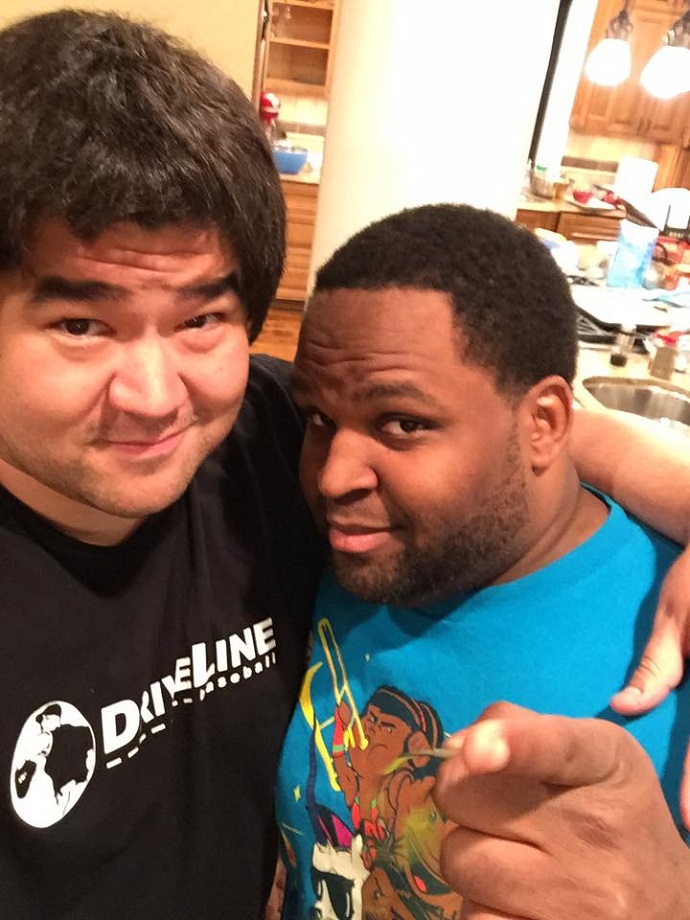
Two longtime friends battle for it all.
The Conclusion
Magic has given me a lot in my life. From a Pro Tour Top 8 to help me pay for college to my very own Goblin token, I’ll always be thankful for this game. But the most impactful thing that Magic has done is put me in contact with people who are now lifelong friends. The Smart and Thinvitational is now a lifelong tradition that I cannot wait to do again and again.
And with any luck, I’ll be a worthy defending champion.


